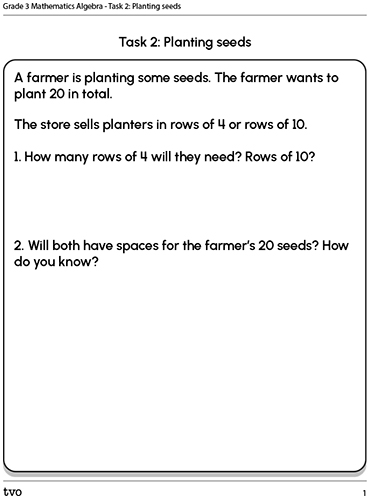Minds On
Equal groups

A grade 3 class has 24 students.
The students need to be divided up into equal groups, with no students left out.
How many ways can the class be divided up evenly?
You may wish to use the number line, counters, or another method of your choice to help count and support your thinking!
Let’s explore a Number Line together! Your teacher will show you how to use the Number Line and then you can try using it yourself!
Record your ideas in your notebook or another method of your choice.
Action
Equal groups in the classroom
Let’s think back to the grade 3 class from the Minds On section.
Reflect on how you may have evenly divided up the class and how that could be represented.
4 groups of 6 or 6 groups of 4?
Did you use 4 groups of 6 or 6 groups of 4?
Press ‘Equal Groups’ to reveal how 4 groups of 6 or 6 groups of 4 can be represented.

Therefore, 4, 6, and 24 are a fact family.
Student Tips
Did you know?
If you know one fact in a fact family, you can determine the others.
For example,
From this equation, you can determine the others in the fact family, which would be:
12 groups of 2 or 2 groups of 12?
How about 12 groups of 2 or 2 groups of 12?

Complete the missing numbers for this fact family.
For each sentence, select the missing “number” from the drop-down menu.
3 groups of 8 or 8 groups of 3?
Did you find 3 groups of 8 or 8 groups of 3?

Record this fact family.
Press ‘Show Answer’ to reveal the complete fact family.
Student Tips
Did you know?
Multiplication and division have an inverse relationship. That means that you can use the opposite operation to help you solve a problem with a missing number.
Your turn: word problems!
Word Problem: In the classroom
There is a class with 16 students.
Student A says they can make 2 groups of 8, but Student B says they could make 4 groups of 4. Student C says they both will work.
Who is correct? Justify your answer.
Record your ideas in your notebook or another method of your choice.
Task 2: Planting seeds
A farmer is planting some seeds. The farmer wants to plant 20 in total.
The store sells planters in rows of 4 or rows of 10.
- How many rows of 4 will they need? Rows of 10?
- Will both have spaces for the farmer’s 20 seeds? How do you know?
Complete the Planting Seeds Word Problem in your notebook or using the following fillable and printable document. You can also use another method of your choice.
Task 3: Write your own word problem
Student Tips
Product
The product is the quantity that results when 2 or more numbers are multiplied.
Write a word problem where the product of 2 numbers equals to 30.
Solve your problem showing more than one possible solution.
Show your work. Record your thoughts and answers.
Record your ideas in your notebook or another method of your choice.
Consolidation
Tricycles and bicycles

Tricycles have only three wheels each.
Inside a store, there are four tricycles on display, and six bicycles on display in another section of the store. Which section has more wheels?
Use the numbers in the problem to help you explain how multiplication and division are related and how you can use that relationship to show if expressions are equal or not.
You may wish to use tools like the hundred chart or counters, like wooden shapes or small items to help count and support your thinking!
Let’s explore a Hundred Chart together! Your teacher will show you how to use the Hundred Chart and then you can try using it yourself!
Complete the Tricycles and Bicycles Activity in your notebook or using the following fillable and printable document.

Press the Activity button to access the Tricycles and Bicycles Activity.
Activity(Opens in a new tab)Reflection
How do you feel about what you have learned in this activity? Which of the next four sentences best matches how you are feeling about your learning? Press the button that is beside this sentence.
I feel...
Now, record your ideas about your feelings using a voice recorder, speech-to-text, or writing tool.
